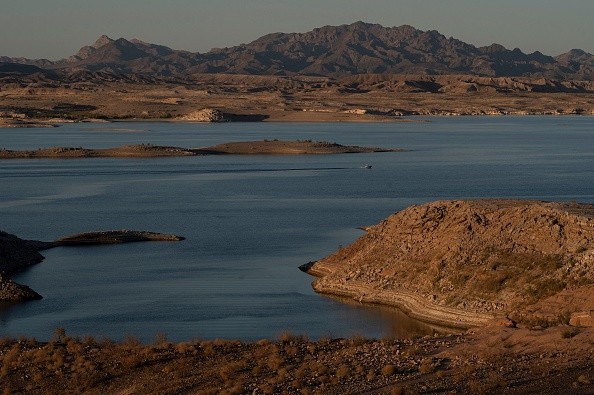Lake Mead's water levels are approaching dead pool levels. The nation's largest reservoir reached 1,043.8 feet on Thursday, the lowest level since the lake was created in the 1930s.
Lake Mead's water levels fell to historic lows this week as the protracted drought worsened by climate change and growing water demands drove the reservoir closer to becoming a "dead pool."
Continuous Decline

According to the National Park Service, the minimum elevation required to generate power at Hoover Dam is 1,050 feet. The reservoir would be termed an "inactive pool" below this level. However, Patti Aaron, public affairs officer for the Bureau of Reclamation's Lower Colorado district, informed the Boulder City Review in May that Hoover Dam would still be able to produce electricity below this level.
If the reservoir's water level falls below 895 feet, it will become a dead pool, which means the water will be too low to reach the lowest water outlet at Hoover Dam and flow downstream.
While it may take years to reach this level, the reservoir delivers water to millions of people in Nevada, Arizona, California, and parts of Mexico, many of whom have already experienced a reduction in supply due to attempts to reserve water.
"This is extremely dangerous stuff," University of Arizona emeritus professor Robert Glennon told NBC News. Glennon focuses on water law and policy.
While current Bureau of Reclamation predictions show the lake recovering significantly over the next several months, it expects water levels to decrease to 1014.86 feet by September 2023, a nearly 23-foot decline from its September 2022 estimate.
According to KLAS-TV, the low water levels have even forced the WON U.S. Open bass fishing event to relocate to Lake Mohave in 2022. For the last 39 years, the competition has been hosted in Lake Mead.
The water level of Lake Mead was 1,069.86 feet in June 2021, representing a 26-foot decline in one year.
Water Deficit
In August, the federal government declared Lake Mead's first water deficit. Stephen Wilcox told AccuWeather National Reporter Tony Laubach about a moment when water surged over the dam and created a mist that "felt almost like rain."
During the summer of 1983, Lake Mead reached its highest recorded water level of 1,225 feet during a powerful El Niño event. The high water mark is located at 1,229 feet.
The shoreline has retreated to the point that an input valve was revealed in April, and at least two remains were discovered the following month in the lakebed that would otherwise have been deep underwater.
Water levels are expected to fall further until the wet season starts in November.
Related Article : Another Body Found in Lake Mead As Water Level Continues to Drop
For more climate and weather updates, don't forget to follow Nature World News!
© 2025 NatureWorldNews.com All rights reserved. Do not reproduce without permission.





